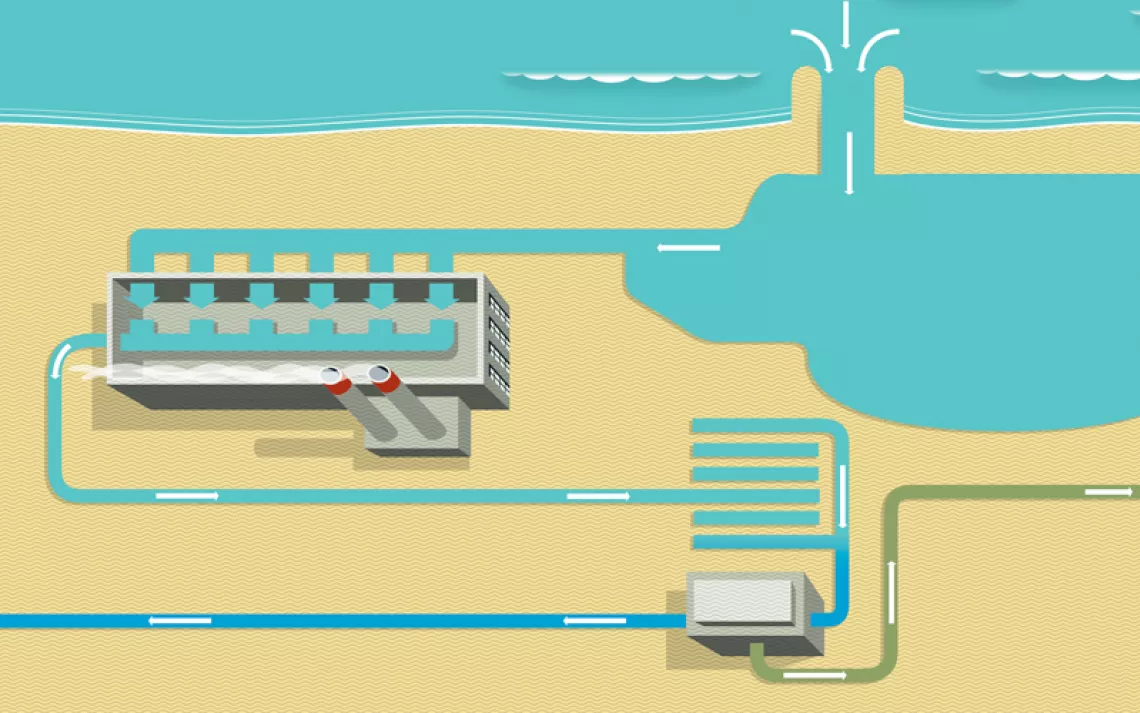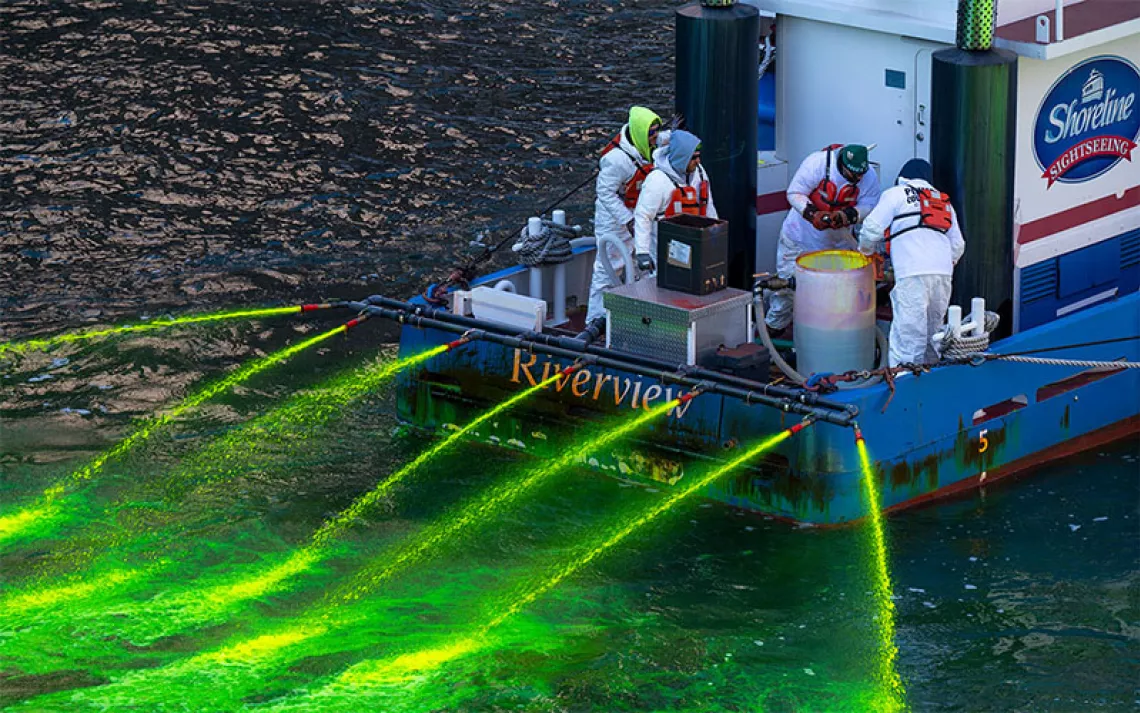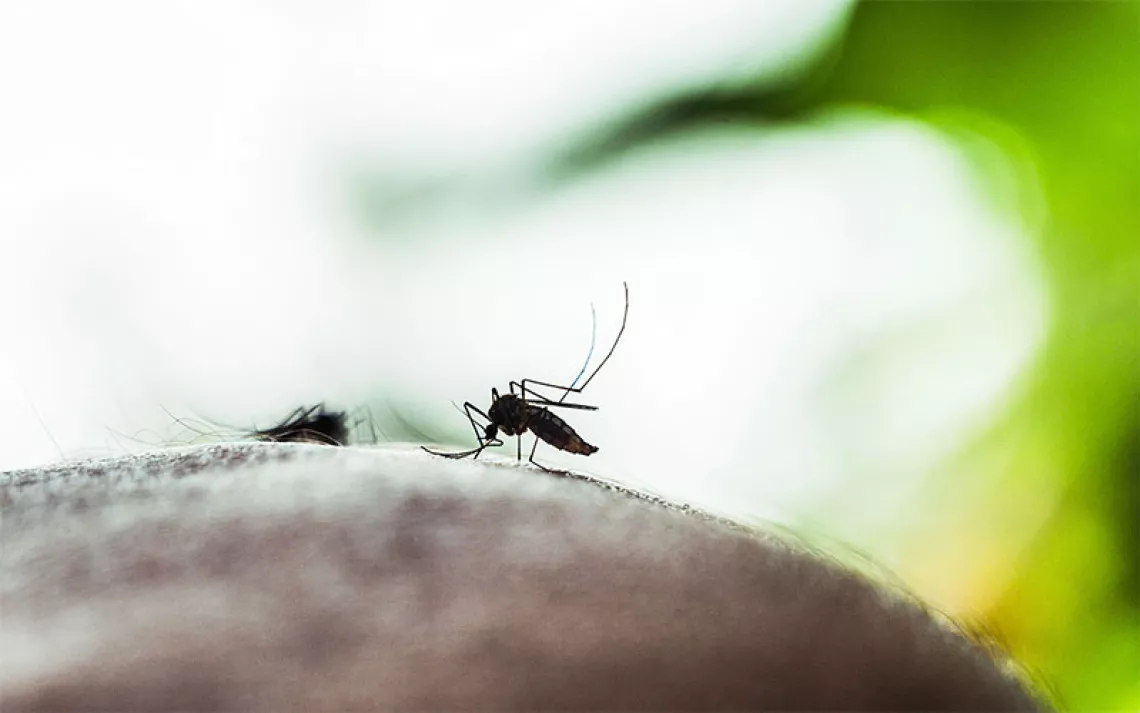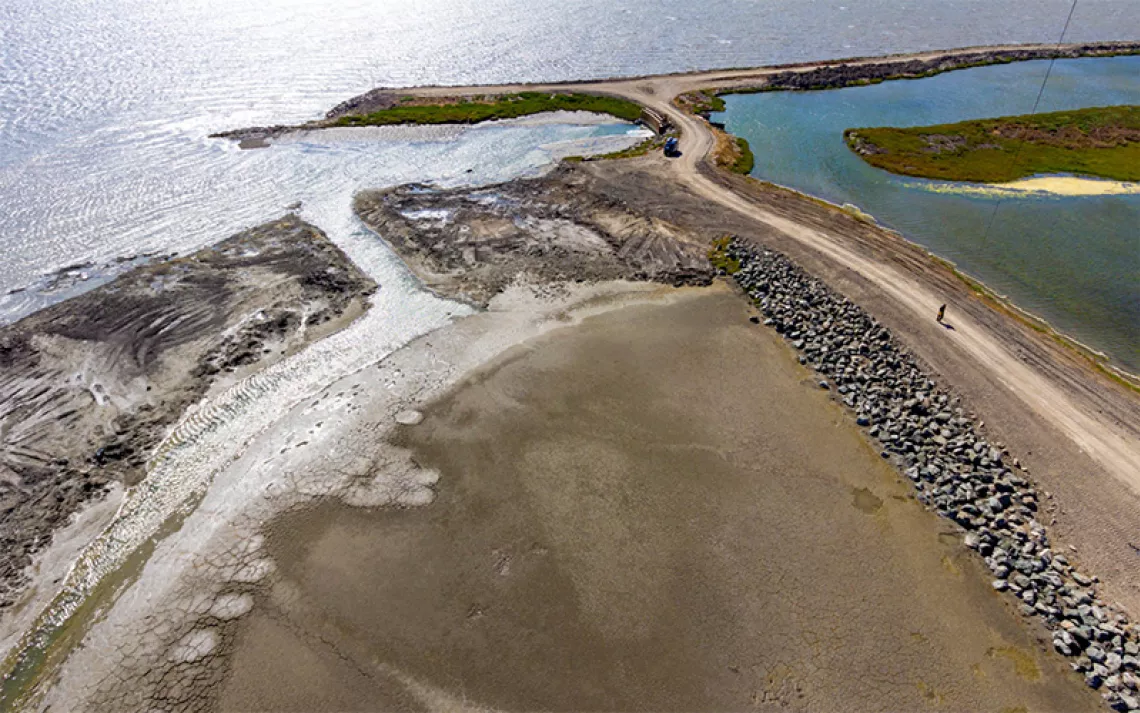River Rights Gone Wrong in California
In the Golden State, dwindling water resources are increasingly a source of conflict
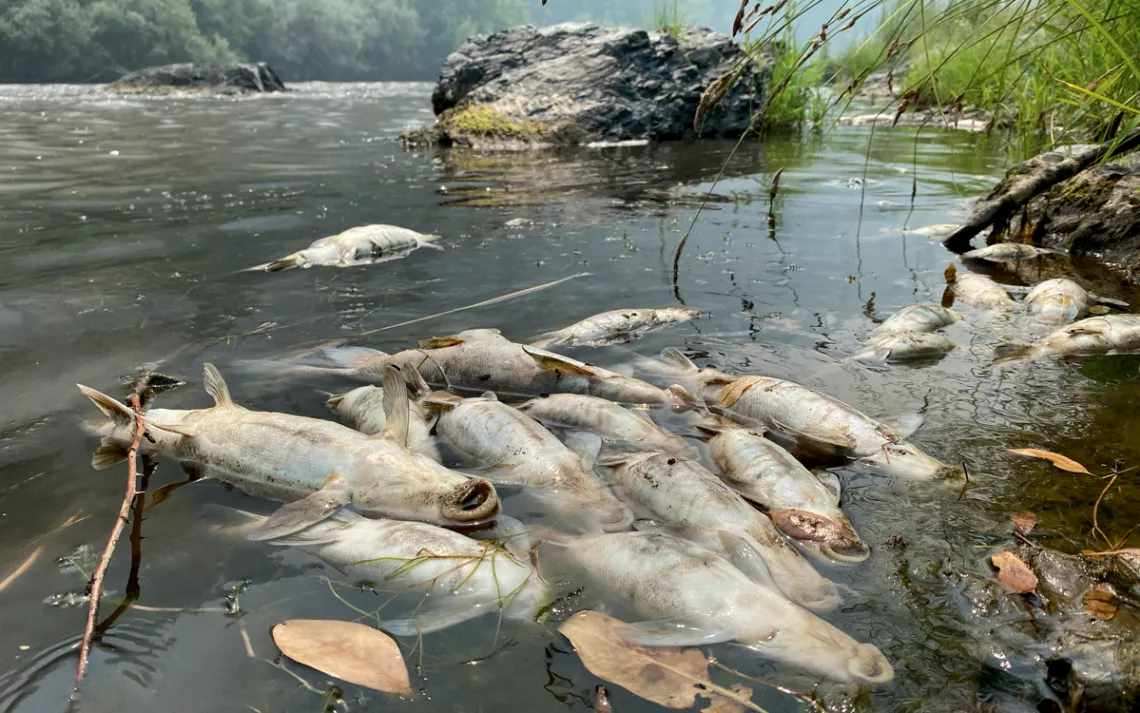
Ash and debris from the McKinney Fire washed into the Klamath River, killing off fish. | Photo by Stormy Staats/Karuk Tribe Department of Natural Resources
It had already been a heartbreaking summer for members of the Karuk Tribe when dead salmon began floating down the Klamath River, their silver bellies dimly illuminated under a rust-colored sky. The McKinney Fire had scorched 60,000 acres on and around tribal lands along the river in upper Northern California. As the fire burned, a drenching storm had plunged tons of ash and debris into the river, killing thousands of fish, according to tribal estimates.
“We had a thunderstorm that put out three inches of rain in 45 minutes on top of that fire,” said tribal councilmember Arron “Troy” Hockaday Sr. “It put filth and muck into the Klamath River. There was no oxygen in the river for 24 hours; it killed every living fish in that 50-mile stretch. We had suckers. We had crawdads. We had eels. We had shrimp. You still had steelhead in the water. You had coho fry and Chinook fry—that’s their spawning grounds.” The Klamath River, along with its tributaries, “is the heart line of the Karuk Tribe,” Hockaday said. “It’s our bloodline; it feeds us. It’s what makes us survive.”
Then, just days after the storm, the water in the Shasta River, a key feeder stream that flows into the Klamath, suddenly appeared to dry up. Hockaday and the tribe understood that this was no natural occurrence. They knew because in mid-August, the Shasta River Water Association, a group of farmers and ranchers, had announced that they would defy state drought restrictions and begin diverting the Shasta River to provide water to their crops and cattle.
The Shasta, about 58 miles long, is not a mighty river. Draining the north slope of Mt. Shasta and bubbling up from Big Springs, just west of the mountain, the river follows a serpentine course, often making horseshoe bends past Yreka and down into the Klamath Basin. It flows north into the Klamath about 13 miles downstream of Bogus Creek and five miles up from Humbug Creek. Before the farmer diversions, which lasted eight days, the Shasta was running slightly below 50 cubic feet per second in the drought-ravaged region. Even at low flows, the river is essential to spawning salmon.
“So we’re going through a disaster with all these dead fish—hundreds, thousands of fish floating down the Klamath River—and then the farmers turn around and take half the Shasta River,” Hockaday said. “That was like kicking me in the teeth. It was heartless.”
The farmers don’t see it that way. Rick Lemos, a cattle rancher and a director of the Shasta River Water Association, said he and other ranchers in the region were “totally out of water.” The summer of 2022 was the first time since 1912 that the state had completely halted diversions from the river, Lemos said, forcing him to sell part of his herd.
The ponds from which the cattle drink are typically filled by irrigation canals, but because of the state order, the ponds had nearly dried up— several of Lemos’s cows had gotten stuck in the muddy bottom of a shallow, turbid pond. “I took the tractor and pulled them out, and I was able to save a couple of them,” he said. “One of them I had to finally euthanize because she’d been stuck in the mud too long.” Lemos, who is the fifth generation of his family to farm in the area, said ranchers made sure the flow didn’t drop below 20 cubic feet per second and that the diversions didn’t result in the death of any fish.
The State Water Resources Control Board issued a cease and desist order, but the ranchers kept pumping water. Initially, the board told the Shasta River Water Association that it could be fined up to $500 per day for violating the curtailment order, then warned that repeated violations could lead to daily fines of $10,000. For farmers—who’d been paying tens of thousands of dollars to truck in water and buy feed for their cattle because they couldn’t grow hay—this wasn’t much of a threat.
“I’m not sure how you keep rational folks from risking a $500 fine if it means keeping their cattle alive,” said Brian Gray, a senior fellow at the Public Policy Institute of California. Gray does not condone noncompliance but said, “It is not surprising when people decline to follow the law when it makes much more sense economically to violate the law. . . . They’re going to do whatever it takes to keep their cattle alive.”
Ultimately, the association was fined $4,000—about $50 each for the roughly 80 members. “I don’t want to pay them a dime. I want to take them to court,” association president Jim Scala told CalMatters, a news magazine covering California, in late August. “Because if we pay them . . . that’s like admitting that we were in the wrong.” The association paid the fine.
“Jiminy Christmas, the fine don’t fit the crime. They didn’t get punished for what they did,” Hockaday said. “So what’s gonna stop them from doing it from here on out? If we did that, I’d be sitting in prison right now.”
Tribal leaders and environmentalists fear that as climate change accelerates and water becomes ever more scarce, illegal diversions will become more common. “Without substantial compliance, you can’t expect the water rights system to function for anybody,” said Jay Lund, vice director of the Center for Watershed Sciences at the University of California, Davis. “If we don’t have a functioning water rights system, the losses and damages from scarcity and the conflict over scarcity will just increase.”
Hockaday, 57, recalled that in his father’s lifetime, salmon (aama in the Karuk language) were so abundant that thousands filled the Klamath for months on end, providing year-round sustenance. The Karuk, the second-largest tribe in California, with nearly 4,000 members, still fish in the traditional way. Fishermen (they’re all men) balance themselves on the rocks above the rapids and use a pair of 12-to-16-foot fir poles with a net at the end that they dip into churning water to pull fish out. It’s hazardous but gratifying work.
Hockaday has five children and six grandkids. “One of my grandsons is really into fishing and hunting with me,” he said. “I want to teach him the tradition of dippin’ at the falls. I have another grandson who’s one year old. I want to teach him our culture. I want to teach him our livelihood and what the river means to us. I want to sit above Ishi Pishi Falls like the elders did when I was young and watch the youngsters carry fish up. And one of these days, I’d love to see my grandson bring me up a fish. That’s my dream."
 The Magazine of The Sierra Club
The Magazine of The Sierra Club
